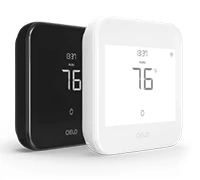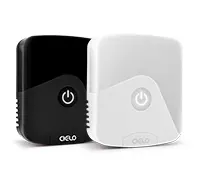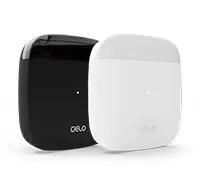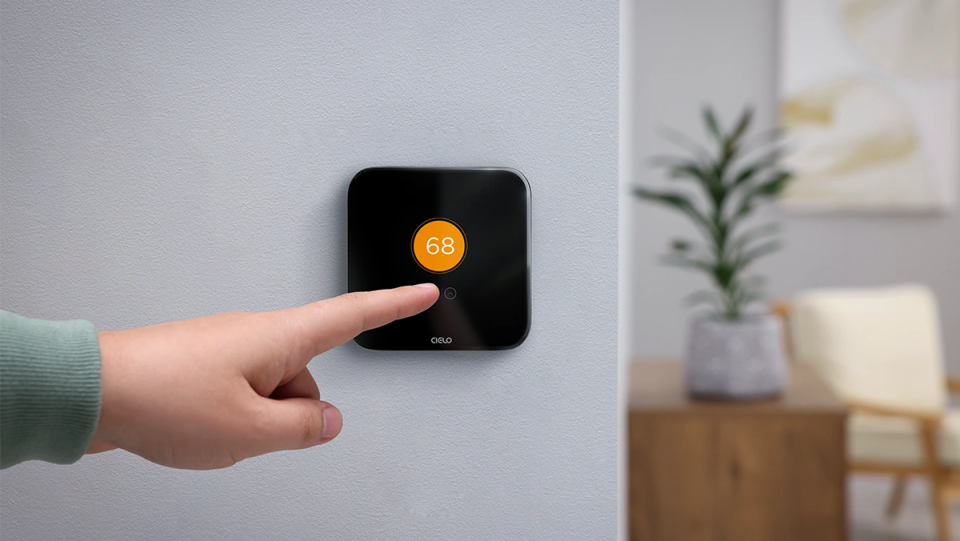
Key Takeaways
- A central heating system provides uniform heat distribution throughout your house.
- There are several types of central heating systems, including furnaces, boilers, and heat pumps.
- Incorporating smart thermostats with central heating systems allows for automated temperature control, leading to enhanced efficiency & comfort.
As the mercury drops and frigid winds howl, central heating emerges as your knight in shining armor, ensuring that your home remains a toasty haven amidst the icy cold winter.
Central heating systems are designed to warm up your space by extracting thermal energy using a fuel source and then transferring it indoors. They offer the most effective means of heating your home while maximizing indoor comfort. Moreover, they boast impressive energy efficiency, translating into substantial savings on your heating bills over time.
This blog post delves into the workings of a central heating system, explores its main types, and outlines essential considerations before installing one in your home.
What Is Central Heating and How Does It Work?
Rather than relying on separate heaters in each room, central air heating allows for a uniform temperature throughout the house. This method of heating provides a level of comfort and convenience that is hard to match.
Central heating systems typically consist of a heat source, a distribution system, and a control system. These home heating systems operate by using fuel (gas, oil, or electricity) in a boiler, furnace, or heat pump to produce hot air or water. The heat is then distributed throughout the building using a network of ducts and vents, such as a furnace or a heat pump. In boiler-based systems, hot water or steam is circulated through pipes to radiators or baseboard heaters that emit heat into the rooms.
A thermostat, such as a programmable thermostat or WiFi thermostat, is used to control the temperature in your home. You can set the desired temperature, and the heating system will cycle on and off to maintain that temperature.
In homes with multiple areas or floors, HVAC zones can be created to control and distribute heat independently to those spaces. This allows for customized temperature control based on individual preferences and can lead to energy savings.
Components of a Central Heating System
Here are the main components of your central heating unit:
-
Burner
The burner’s essential function is to ignite the fuel source in the furnace and boiler, which can be either gas, electricity, or oil, to create heat.
-
Combustion Chamber
Within the combustion chamber, the burner lights up the fuel and facilitates the crucial mixing of fuel and air. This is where the initial stages of the combustion process take place, ensuring an efficient and safe fuel burning.
-
Heat Exchanger
Following combustion, the heat exchanger takes over, efficiently harnessing the heat generated by the burned fuel. The heat transfer occurs through a network of metal tubes, coils, fins, or plates, maximizing the utilization of heat energy.
-
Blower
The blower is a component in forced air systems like furnaces or heat pumps. It circulates warm air through the ductwork to the vents strategically installed in your house.
-
Refrigerant
Refrigerant is a vital component in heat pumps. It plays a key role in extracting heat from the outside and transferring it indoors. As it cycles through the system, refrigerant undergoes phase changes from liquid to gas and back, enabling efficient heat transfer.
-
Ductwork
Hot air is distributed from your furnace or heat pump to your entire home using a network of ducts.
-
Thermostat
A thermostat acts as the brain of your heating system. It works by sensing your home’s ambient temperature and then communicating with your heating system to make the changes according to your preferred settings.
Related: All You Need to Know About Air Conditioner Components
Top Central Heating Systems for Your Home
There are various types of heating systems, each with its pros and cons. Here are the top commonly used central heating units:
Furnace

Furnaces have undoubtedly been a trusted heating system for many years, and they continue to reign supreme across the United States. They are renowned for their exceptional efficiency, even in the harshest cold spells. These systems are also exceptionally durable and capable of serving your heating needs for many years when properly maintained. Here’s all you need to know about furnace maintenance.
A furnace is a type of forced air heating as it uses air as a heat transfer medium. It works by burning a fuel source such as natural gas, oil, or propane to heat the air. A blower fan pushes the heated air through a network of ducts. The hot air is delivered via vents or air registers to every room in your house. A thermostat monitors the indoor temperature and signals the furnace to cycle on or off, maintaining your desired comfort level.
| Pros | Cons |
|
|
|
|
|
|
Boiler
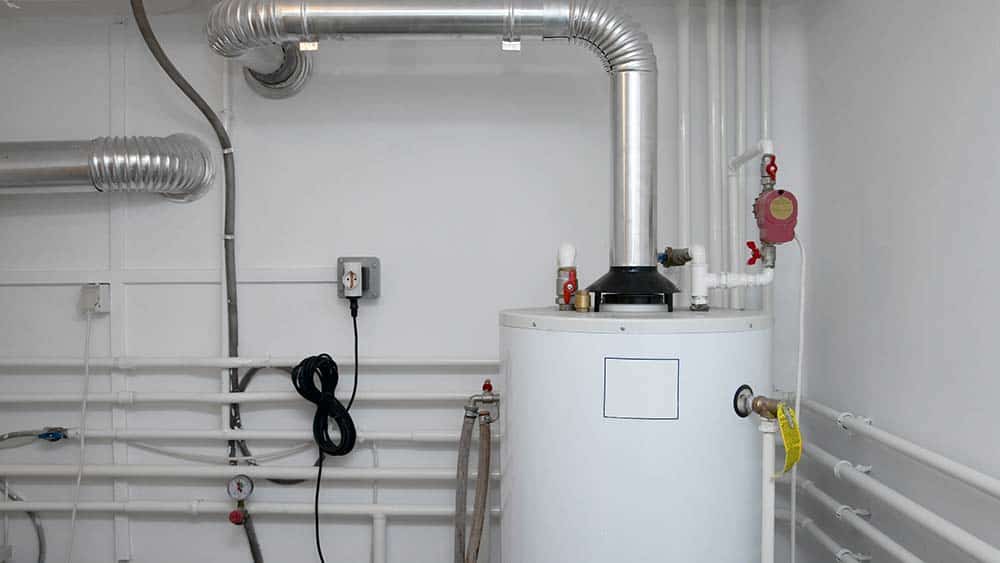
Boiler-based systems, also called hydronic systems, operate by heating water in a central boiler to produce steam or hot water. The heated water or steam is then circulated through a network of pipes to the radiant heating systems or baseboard units installed strategically around your house. The water/steam releases its heat at the radiators, which then warms up the air in your home.
These heating systems can provide both space heating and hot water for domestic use, making them versatile and cost-effective. They are often powered by natural gas, oil, or electricity.
Unlike forced air systems, boilers don’t blow around dust, making them a great option for homeowners concerned about their indoor air quality. Another advantage of boiler units is that they provide consistent and even heating, eliminating cold spots in your home.
| Pros | Cons |
|
|
|
|
|
Related: Furnace vs. Boiler: What’s the Difference & Which One Is Right for Your Home?
Heat Pump
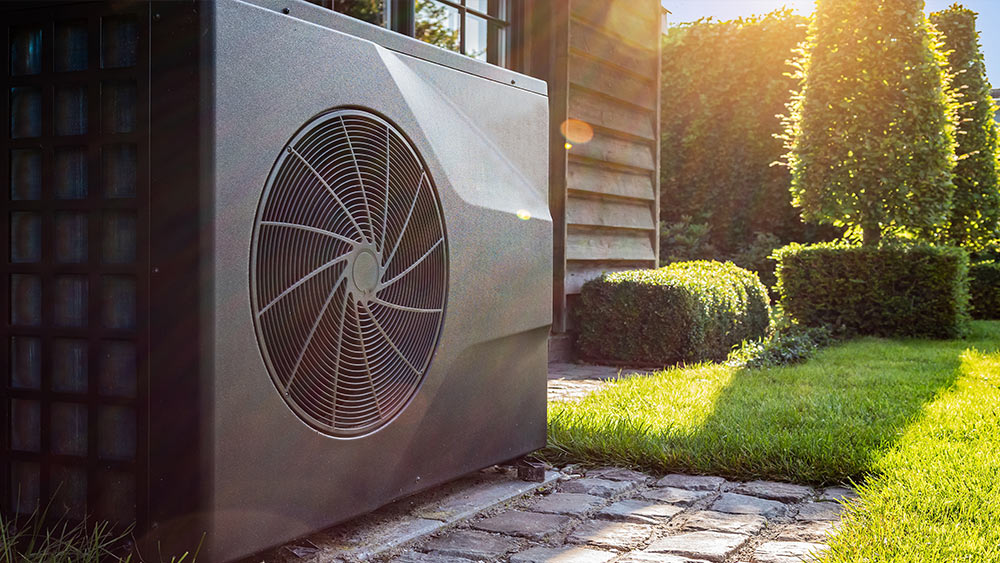
Central heat pumps are an excellent choice for moderate climates and can provide both heating and cooling. Air-source heat pumps are mostly used in residential settings. They work by utilizing refrigerant, a gaseous substance, to absorb heat from the air and carry it inside, where it releases the heat to warm up your house. The hot air is transferred indoors through a network of vents and ductwork. The central heat pump can also switch to an air conditioning mode in summer by reversing the flow of the refrigerant. This way, it absorbs heat from the inside of the house or building and releases it outside, making the place cooler.
In addition to air-source heat pumps, there are other types of heat pumps, such as geothermal heat pumps that take heat from the ground and water-source heat pumps that extract heat from the water.
As heat pumps move heat rather than generate it, they are more energy efficient and reduce electricity consumption by up to 75% compared to other central heating systems such as furnaces.
| Pros | Cons |
|
|
|
|
|
Related: Heat Pump vs. Furnace: The Best Way to Heat Your Home
Make Your Central Heating Smart
Smart thermostats are a game changer when it comes to home comfort, convenience, and savings. You can easily pair them with your furnace, boiler, or heat pump. They connect to your home’s Wi-Fi network, allowing you to remotely control and monitor your heating system using a smartphone app.
- With smart schedules, you can tailor your heating preferences to match your daily routine. Once you have programmed your schedules, your smart thermostat takes the reins, seamlessly implementing your settings to keep your indoor climate comfortable at all times.
- Smart thermostats can make automatic adjustments based on whether you are home or not. As you step out the door, the thermostat adjusts your settings to minimize energy consumption. When you return home, it ensures that your living space is brought back to your desired comfort level.
- You can also save big on your bills with the help of these smart devices. They allow you to access your usage history so that you can always be aware of your energy spending and make adjustments to lower your consumption.
Related: Do Smart Thermostats Save Money? – Your Thermostat Energy Saving Guide
Equip your HVAC system with smart features and achieve the perfect balance between comfort & savings.
Learn more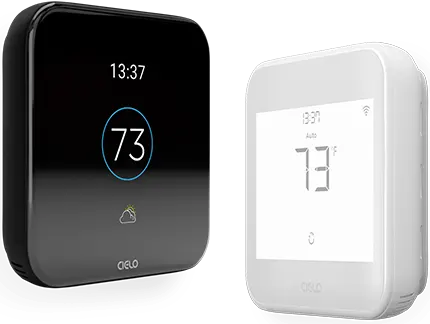
Factors to Take Into Account Before Installation
Before you opt for central air heating, it’s essential to assess your heating requirements to make the right choice for your home. When purchasing your unit, consider your geographic location, local temperature patterns, system efficiency, and the size of your home.
-
Size of Your Home
When considering the installation of a central heating unit, it’s essential to take into account the size of your home. The square footage and layout of your house significantly impact the choice of heating unit. A properly sized HVAC unit will ensure efficient heating throughout your home. If your heating system is larger than required, it will cycle on and off frequently and can lead to unnecessary energy consumption. An undersized unit will need help to achieve your desired temperature settings. It’s advisable to consult with a professional HVAC technician who can perform a heat load calculation to determine the appropriate heating unit size for your specific home.
Related: What Size Air Conditioner Do I Need?
-
Climate Conditions
Optimal central heating installation depends on the climate you live in. Different climates have different heating needs. In places with harsh and long winters, the heating system must be strong and efficient to maintain consistent warmth, especially during extreme cold spells. If you reside in an area where temperatures frequently approach freezing, a furnace may be the ideal choice. Furnaces can rapidly deliver hot air, making them effective for colder climates.
On the other hand, if your region experiences mild and consistent temperatures throughout the year, a heat pump can offer both heating and cooling capabilities, serving your needs year-round. However, advancements in technology have led to the development of cold-climate heat pumps, which are designed to perform efficiently even in frigid conditions.
Related: What Is Auxiliary Heat? Explore Why Aux Heat on Thermostat Is Vital for Keeping You Warm!
-
Heating System Efficiency
Installing a high-efficiency system not only reduces energy consumption but also ensures long-term savings for homeowners.
The furnace and boiler efficiency is measured by annual fuel utilization efficiency (AFUE). According to Energy.gov, AFUE measures how efficient your heating unit is in converting energy from fuel to heat over one year. A higher AFUE rating indicates a higher heating unit efficiency. If you want a high-efficiency central heating system, look for one with a 90% to 98.5% AFUE rating.
The Heating Seasonal Performance Factor, or HSPF, rates the efficiency of a heating system. It is calculated by dividing the total heating output of the season by the total energy consumption during that time. Opting for an HVAC system with a high HSPF rating is recommended for greater efficiency.
-
Age of Ductwork
Pay attention to the age of your ductwork when installing a central heating system. Older ducts may not work well with newer, more efficient systems. They could be poorly insulated, not properly sealed, or made of materials that hinder efficient heat distribution.
If your ducts are the wrong size or have suffered damage over the years, you could be losing a significant amount of heat during distribution. Even if you invest in a high-efficiency heating system, its effectiveness could be compromised if the ductwork is not functioning optimally. Additionally, older ducts may need to meet current building codes or energy efficiency standards, resulting in increased energy usage and higher heating bills.
Related: How to Find Air Duct Leaks: Common Signs & Detection Tips
The Takeaway
One of the most reliable options for keeping your home warm is a central heating system. There are various types of central heating units, each with its own set of advantages and considerations. It’s best to choose one that best aligns with your requirements, budget, and preferences. Regardless of the type of central heating system you select, regular maintenance and periodic upgrades can significantly extend your HVAC lifespan and ensure optimal performance.
